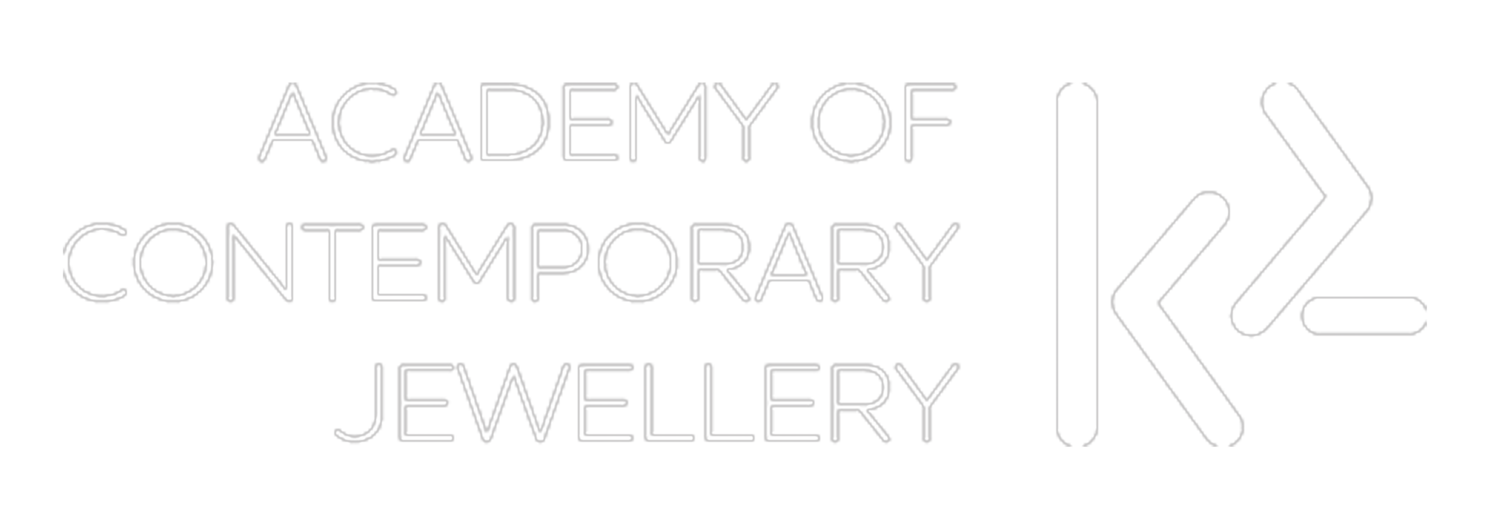‘Nihonga: Neo Japanese Painting’ In conversation with Elena Shkvarkina
Learn an ancient Japanese painting technique at K2 Academy of Contemporary Jewellery in Central London!
2-Hour Class with Elena Shkvarkina
Sunday 25 February 2024
11am - 1pm
In the run-up to our special Nihonga workshop, which will take place on Sunday 25 February 2024 at K2 Academy, we’re sharing our conversation with Elena Shkvarkina, the artist and tutor of this workshop.
K2 Academy: Elena, please give us a little intro about what Nihonga is.
Elena: Sure, it’s hard to define exactly, especially when we talk about contemporary Nihonga for various geopolitical and cultural reasons. But if we look back in history, the term Nihonga first originated during the Meiji Restoration in Japan, to distinguish Yōga (Western-style painting) from Japanese-style painting, namely Nihonga. Although its main purpose was to preserve traditional Japanese painting techniques and schools, it ended up adapting Western aspects of painting like perspective and shading. Today, Nihonga is as versatile as any other art form, although overshadowed by oil painting and acrylics. But what distinguishes it from anything else is the materials used - pulverised mineral pigments (today also synthetic), crushed oyster shells, golden leaf, animal glue, various brushes, paper, and silk. All these make up a core set of materials that you would find in the studio of any Nihonga painter. The rest is techniques and conceptual preferences on how to use them.
K2 Academy: It doesn’t seem like a mainstream form of art. What initially drew you to pursue Nihonga?
Elena: I first encountered Nihonga in 2019 when I visited the exhibition The Anno’s Journey: The World of Anno Mitsumasa at Japan House London. I was mesmerised by the textural allure of Anno’s The Tale of Heike series with mysterious captions on the label ‘Nihonga’. What is Nihonga? - was my natural response. That’s where my research began. Through trials and errors, constant translations and retranslations from Japanese sources, days spent in the British Library, and kind help from people I met on the way, encouraged my progress.
K2 Academy: Does this mean it is difficult to access Nihonga?
Elena: I would say outside of Japan it is not easy but possible. To begin with, the materials are specialised to Nihonga. With paper you can get away by sourcing a thick enough alternative to Kumohada-mashi, with pigments it is more challenging. There’s a grading system for pigment particle size - from finest Byaku which is like powder, to coarse grades between No5 and No9 that help to build tone depth and texture. This grading is unique to Japanese pigment production hence the difficulty to buy them in Europe. But these days Nihonga artists around the world adapt their practice to the local sources available. On top of that, some Japanese art shops keep up with business trends and introduce worldwide shipping.
K2 Academy: What about education?
Elena: For the education part, sad as it may be, academically Nihonga is taught only in Japan. This of course limits the accessibility. On top of that, the global market demand is not as strong because it is simply unknown to the wider audiences. A lot of that is due to limited exposure and education abroad. I feel it firsthand through working in the gallery sector, as well as through the artistic side. On the flip side, it encouraged me to step further and promote Nihonga not only through artistic practice but also through curation and teaching. Collaboration with K2 plays a significant role in this and sets the scene for my inaugural Nihonga workshop.
K2 Academy: Seems like we’re making history here. Can you elaborate on the materials used in Nihonga? What will you use at the workshop for example and what students can expect?
Elena: Nihonga is known as slow art. To learn about the use of all Nihonga materials and techniques would take years. However, I managed to squeeze some exciting bits into two hours of the workshop that will give an authentic experience balanced with playful elements. Traditionally the process involves many steps that require precision, technique, and patience. However today, as the techniques blended and expressions transformed over time, there’s no one way of practicing Nihonga.
This time I offer a contemporary version of Nihonga hence the title Neo. As such, participants won’t need an accurate figurative sketch. This workshop highlights the materiality and experience of Nihonga over drawing skills. For example, we’ll try different types of pigments - mineral, synthetic, coarse, Byaku as I mentioned earlier. Gofun preparation will be one of the key elements. It is a pure white pigment made of pulverised oyster shells. This pigment is prepared in a way that no other is.
K2 Academy: Since participants wouldn’t need any drawing skills, does it mean that you will teach your amazing signature technique? If so, could you tell us a little more about it and what inspired you to develop it?
Elena: Yes, precisely. I remember my first attempts in Nihonga were figurative because my transition to abstract painting was still a consideration at the time. And I think that was an obstacle in the way of fully experiencing the essence of Nihonga. It is very much about tactile senses and direct contact with raw materials - the softness of paper, and crushed grainy minerals. I would literally apply a bit of paint on the paper and watch it slide as I tilt it to one edge.
I like to observe things and I like how the idea of indirect manipulation relates to life. Nature is affected by humans, humans influence and transform one another, sometimes without realising it. I therefore began to mimic natural elemental forces and weathering events which very much reflect human violence, transformation and healing characteristics. It was only natural for me to depart from figurative expression and experiment with what I could paint without touching the surface. Over time my way of painting developed, incorporating not only tilting but also striking, swinging, and vibrating. I unofficially proclaimed it a ‘smashing and dashing technique’. It feels very liberating to manipulate painting in this way and it is this feeling I want to share at the workshop.
K2 Academy: Sounds like a plate-smashing therapy that we all need at times. We look forward to that. To wrap up, can you share any upcoming projects or exhibitions where we can experience your Nihonga paintings firsthand? And what are the plans for future Nihonga workshops?
Elena: The best way to keep up with my upcoming shows and events is to follow me on Instagram and subscribe to my emails on my website. On the curatorial side, I’m working on fundraising for a Nihonga exhibition and other shows. All to be confirmed and announced.
K2 Academy: Thank you for introducing us to the unique art of Nihonga. Looking forward to the class!
Images courtesy of Elena Shkvarkina, photo credit Laetitia Dumez.
About Elena Skhvarkina
Elena Shkvarkina is a London-based Nihonga (Japanese style) and ink painter. Practising the ancient traditions of Nihonga, she prepares paints from pulverised mineral pigments, earths and oyster shells bound with animal glue. In 2022, she received remote mentorship from a Nihonga master based in Tokyo. Beyond private collections, Elena's works grace London exhibitions, showcasing her diverse talents as an artist, gallerist, and curator. Her art, influenced by nature, captures the essence of destructive and regenerative forces seen in natural cycles. Departing from conventional brushwork, Elena employs a unique technique guided by gravity, echoing elemental events such as weathering, erosion, volcanic eruption, and glacial carving.
Learn an ancient Japanese painting technique at K2 Academy of Contemporary Jewellery in Central London!
2-Hour Class with Elena Shkvarkina
Sunday 25 February 2024
11am - 1pm










